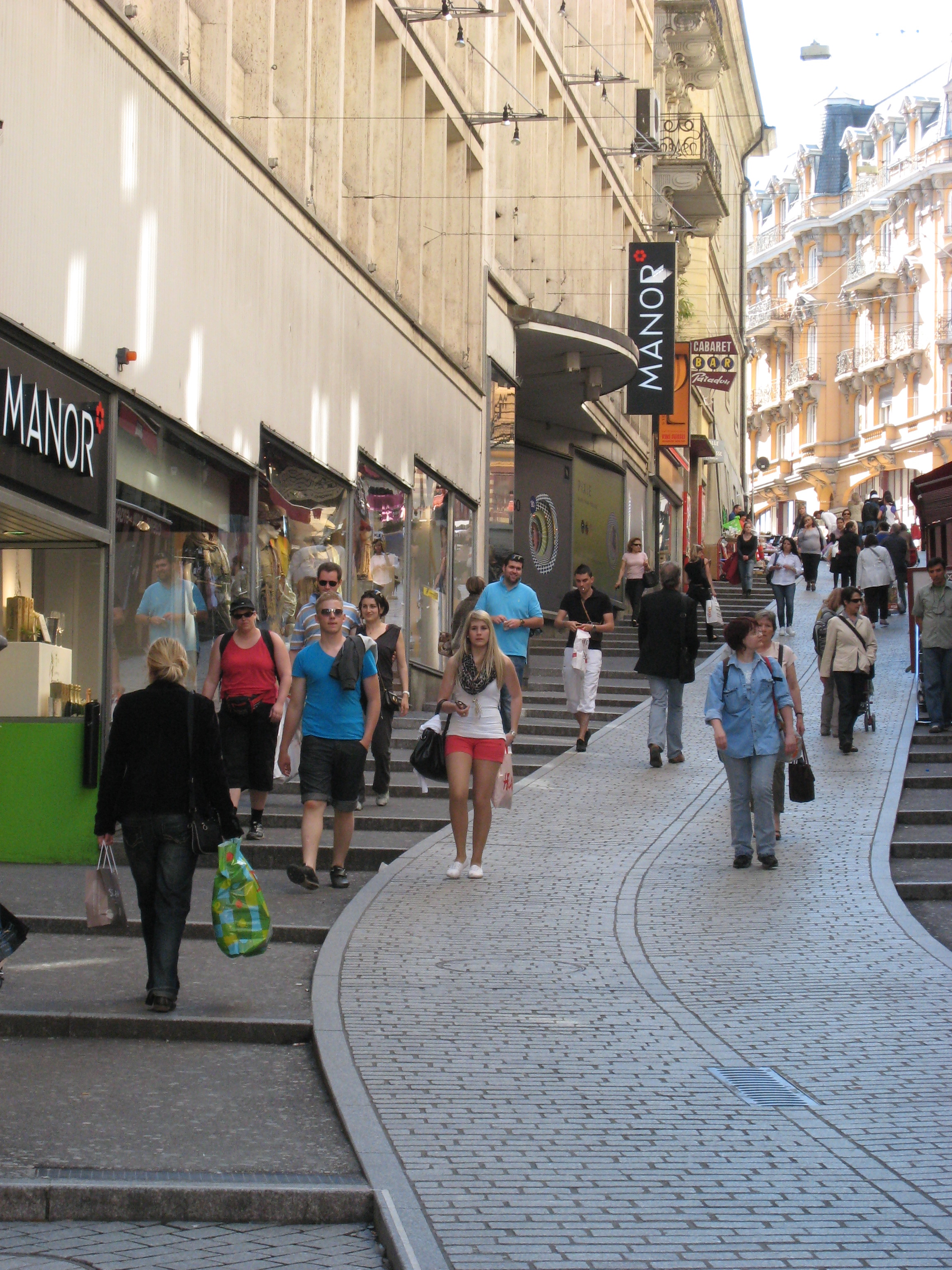
Walking: the best step into the future
10 October 2015
by Nick Michell
Walking is no longer the forgotten mode. The global renaissance of interest in walking and more walkable communities has seen a welcome explosion of research, experimentation and investment in walking in cities and towns around the world. Bronwen Thornton, Development Director at Walk21, looks at how people are once again talking about walking and thinking about people on foot, and the need for cities to invest in walking as a priority mode of transport
People never stopped walking, albeit they are doing it less, but cities stopped making it a priority. Motorised vehicle movement and private motorcars became the urban design standard for old, new and expanding cities. As the world’s population moves towards mass urbanisation cities will need to mitigate the negative impacts of these historical practices by building in future resilience.
Sustainability and viability become critical considerations and city streets are becoming the focal point for addressing these challenges. Cities that are leading the way are striving to be smarter, to utilise resources efficiently and tap into the potential of technology for solutions and creative opportunities. More people walking is critical to the success of these ambitions.
Whether the city administration wants more people to choose to walk or they need to provide for those that already walk or have to walk, it is critical that cities invest in walking as a priority mode of transport and as an essential, vibrant aspect of urban life.
The last decade has shone a bright light on walking. We have seen the transformation of public space and creative rethinking about how we engineer our streets (for all users), innovative local programmes to encourage and promote walking and high profile campaigns and celebrations of public life, street life and urban living. But we are still to see a fundamental, global shift in thinking that makes walking the priority mode for our cities and towns.
We are paying a high price for not investing in walkability. The numbers are compelling, vehicle-centric city design, suburban sprawl, motorways, the assumption that private motor vehicle travel is the primary mode of transport and the sacrifice of public space to car parking is costing both individuals and the collective purse, dearly. We are paying the price directly through transport costs, and indirectly in reduced air quality, extended travel times, loss of social capital and individual wellbeing and increasing public health bills.
“In the USA, transport now accounts for 19 percent of household costs, compared to 3 percent a hundred years ago,” says Christopher Leinberger, urban theorist and visiting fellow at the Brookings Institution in Washington DC. “Sprawl costs the American economy more than US$1 trillion annually, according to a new study by the New Climate Economy. That’s more than US$3,000 for every man, woman, and child.”
In Sydney, Australia, 92 percent of trips in the city centre on weekdays are walking, but 50 percent of travel time is wasted waiting to cross the road. The City of Sydney is choosing to invest in walking to realise economic gain for the CBD and improving these crossing points or building them out, is the perfect starting point.
In the European Union, travel time is being compromised by motor vehicle traffic in a different way: traffic congestion in the EU costs nearly €100 billion or 1 percent of GDP annually. Traffic congestion also contributes to air pollution levels. Urban mobility accounts for 40 percent of all CO2 emissions from road transport and up to 70 percent of other pollutants from transport. But it is not only air quality that is impacting on public health. In 2007, lack of physical activity was estimated to be costing the National Health Service in the United Kingdom between £1 billion and £1.8 billion.
With growing demand on services and on the available space within cities, coupled with the need to mitigate the negative impacts of increasing motorised traffic, noise and air pollution, declining personal health and social severance, cities are looking for functional, efficient and effective approaches to make best use of the available space, wise use of taxpayers monies, attract private investment and realise a range of benefits for residents and businesses.
Walking can deliver
The benefits of walking are many; impacting on the economical, environmental, social and personal health of the city, its citizens and businesses. Investing in walking and walkability will realise positive outcomes across the full spectrum of city life.

According to a Transport for London, Town Centre Study, people who walk to their local high streets, visit more often, spend more time and spend more money; contributing to the social vitality of the street and the economic viability of the shops and local services.
More walking reduces congestion, not just by reducing vehicles on the roads, but also by reducing demand on public transport systems, especially for short hops.
Walking is low emission, carbon free, contributing to cleaner air and less particulates. Especially for cold start short journeys, walking can realise the greatest carbon reductions. Walking does not expose individuals to greater pollution, with research showing that the pollution inside vehicles is greater than on the sidewalk.
More people walking makes the city safer for everyone. For road safety outcomes, more walking makes it safer for all modes, not just walking and for personal security; walkers put more eyes on the street and displace anti-social behaviour with positive activities.
Walkable developments attract private investment and more walkable streets result in greater economic uplift from street enhancements with increased rental incomes and property values. City vitality and social cohesion comes from people on foot, people spending time in public spaces, sitting in cafes, shopping, meeting neighbours, walking children to school.
Walking is not just for the city centre, it must be for the inner and outer suburbs as well. Different approaches are required in different urban contexts, whether its access to public transport or local services, pedestrian priority can be realised in suburban contexts as part of an overall package of modal shift. Cities must utilise public transport as the journey extender, so that people can choose to walk from their front doors and reach their desired destination, at whatever distance. The walking habit must start from the front door, otherwise the car-habit will be harder to break.
Cities cannot be passive and just wait for people to think about walking and to choose to do it. Nor can they continue to allow people to die on the roads for lack of appropriate infrastructure and facilities. They need to act, to enable their citizens and visitors to walk by providing the means, and to invite them to do so, by providing the motivation. Increasing walking in cities to realise the full range of benefits it can bring, requires a clear and comprehensive approach. The starting point for such an approach is provided by The International Charter for Walking.
The International Charter for Walking provides the vision and strategic principles that underpin more walkable communities. It expands these principles with illustrative actions to enable city administrations to realise that vision through action planning, programme delivery and measuring progress. The Charter has been signed by mayors, city councils and individuals around the world, demonstrating their commitment to the principles it contains and the benefits more walking can realise for the city, its citizens, businesses and visitors.
The Vision: Creating healthy, efficient and sustainable communities where people choose to walk
The eight strategic principles:
- Increased inclusive mobility – safe and convenient independent mobility for everyone regardless of age, gender, ability, ethnicity, income or language
- Well designed and managed spaces and places for people – a healthy, convenient, attractive environment away from noise and pollution
- Improved integration of networks – connected direct and easy to follow walking routes that are safe and well maintained linking to shops, services and public transport
- Supportive land-use and spatial planning – policies which enable walking for everyday activities and maximises opportunities to reduce car-dependency
- Reduced road danger – streets designed to prevent accidents and be safe for everybody
- Less crime and fear of crime – urban environments designed and policed to reduce crime
- More supportive authorities – commitment to support and safeguard walkability with policies, data, planning and delivery
- A culture of walking – good quality information about walking and opportunities to celebrate and enjoy walking as part of everyday social, cultural and political lift
It’s hard to argue against the principles in the Charter, but it seems it’s also hard to begin living by them. But it is critical that cities start taking the first steps and they can do this, internally by embedding the principles of the Charter into policy and planning, and externally through high profile public space and walking projects that raise the profile of walking and demonstrate the economic and social return of investing in pedestrian priority. Success stories from cities demonstrate it can be done: redefining streets to provide active spaces for people to sit, walk and cycle, such as the great public space created in Times Square in New York (which also improved traffic flow), the revitalisation of inner city Melbourne to one of the world’s most liveable cities (with a 40 percent increase in pedestrian traffic) and the traffic-free greenways of China, particularly Guangzhou, which continue to expand and extend. Since Munich implemented the first large-scale pedestrian scheme in its city centre in 1972, vibrant, traffic-free spaces have become the heart of cities around the world.

Cities look to each other to maintain a competitive edge and so we see ideas leap-frogging around the world, like the Legible London scheme, which has triggered best practice way-finding systems for walking in cities from Edinburgh to Buenos Aires. Breaking best practices and city success stories will be showcased at the annual International Walking and Liveable Communities Conference in Vienna in October 2015. These inspirational investments are vital to the public profile of walkability and the development of professional skills to bring about the walking revolution we need to take our cities into the future. The choice is clear, a new path for cities that puts people at the heart of its planning and practice, that dedicates public space and infrastructure to the health and wellbeing of its citizens and encourages active travel.
Walking is not only a mode of transport for our cities, it is a mode of living. Pedestrians are the lifeblood of a city and to keep them and the city flowing we need to invest in the vitality of our streets and public spaces, the viability of public transport services and infrastructure and the vibrancy of city living.
Walk21 is an international conference series, professional network and consultancy service set up to develop and share best practice which encourages more people to walk.











